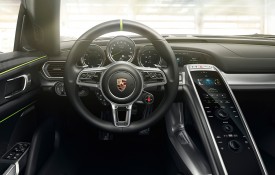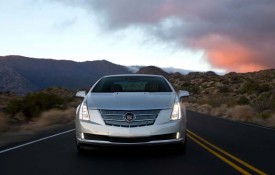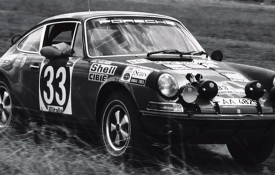
Sold for $21.78M in August 2016, this 1955 Jaguar D-Type – number XKD 501 – won the 24 Hours of Le Mans in 1956
Photo: Patrick Ernzen, courtesy of RM Sotheby’s
There is a segment of investing in real estate where buyers look for “value added” or “upside” to a property in an effort to increase the potential for profitability. This generally involves a buyer finding a property that consists of outdated design and finishes, is in disrepair or is underdeveloped on its parcel of land. The owner of the property will need to update these deficiencies to today’s standards, enabling the property to be leased or sold at full market value and ultimately making a profit for the owner. It is essential the property has “good bones” such as abundant parking, bountiful windows, high ceilings, and the proverbial “location, location, location.”
The same strategy can be used in the collector car market. Some collectors are looking for original condition vehicles that have been mostly untouched since purchased when new. Other collectors are looking for them to be fully sorted and restored.
“Some of the most valuable collector vehicles in the world have significant history or stories that distinguish them from the others In their class.”
Vehicles in both of these conditions have a proven track record of commanding the highest values in the marketplace. An abundance of old collector cars in various stages of disrepair are available for sale in the marketplace, but how do you know what to purchase and to what extent the restoration process and project should be undertaken?
When selecting a collector car to purchase for either a light refresher or a full restoration, consider the follow three parameters:
- Select a manufacturer that has a broad following worldwide. Typically European makes and models attract a more diverse subset of buyers from around the world whereas American models are generally limited to U.S. collectors only.
- Find a vehicle that has “good bones.” This includes but is not limited to the vehicle having original components, such as the engine and transmission. Possessing original core components dramatically affects the value of the car for the better.
- Make sure the vehicle is structurally sound. One of the biggest issues that affects older cars is rust and fillers. Sometimes difficult to find initially, these can lead to tremendous and unexpected increases in restoration costs. Once you decide on the vehicle you will purchase, it’s important to also decide on a brand expert who can thoroughly inspect it for any issues prior to the final purchase. The abundance of experts in the Los Angeles and surrounding areas can give you a full assessment of the restoration process and estimated cost. Once you have a clear understanding of what you are buying and the estimated cost to get the car into the desired condition, you will need to determine whether the base price of the vehicle and restoration cost are above or below the fair market value of other restored examples on the market. If you feel there is upside or added value, then this may be the car for you. One of the other elements that tends to bring greater value to a collector car is its story.

A consistent $1M seller at auctions, the 300 SL is the spiritual predecessor of the modern-day Mercedes-Benz SLS AMG
Some of the most valuable collector vehicles in the world have significant history or stories that distinguish them from the others in their class. Whether the vehicle has a decorated track record on the race track, an appearance in an iconic film or television show, or was once owned by someone famous, history is always on your side in the collector car space. Although the car you are purchasing may not have as significant of a story, knowing the origin of the vehicle, past owners, collecting copies of service records, and a window sticker can enhance its value. Additional items to collect include original or period correct tool kits, owners manual, and an original sales brochure from the manufacturer.
With all this said, it’s important that you buy vehicles you are truly passionate about and can enjoy. It is sometimes difficult to time the markets, so you may be holding the car until the next cycle. Fortunately when you have a strong vehicle with a story and good bones, it will maintain its long-term value.











































